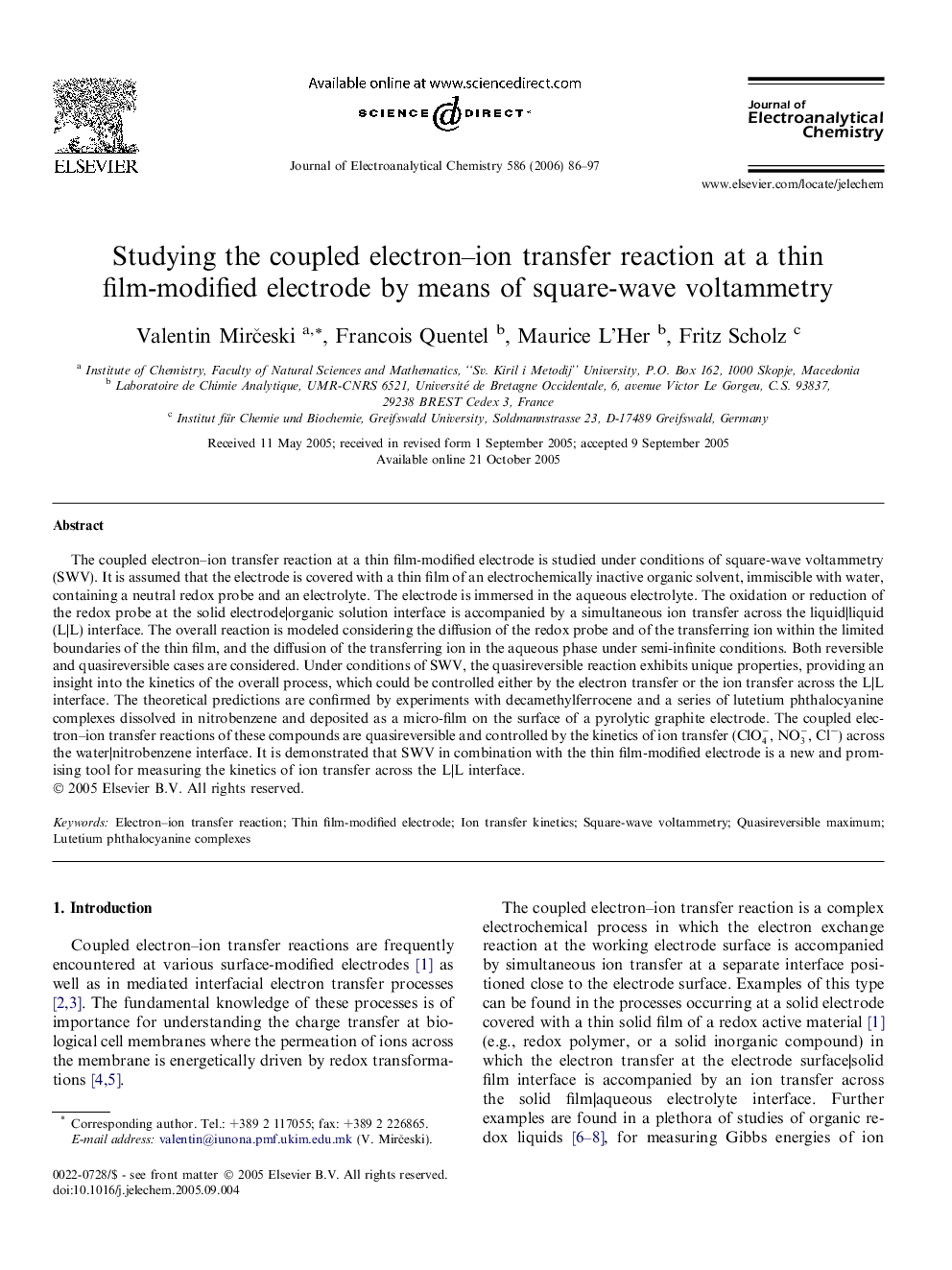| Article ID | Journal | Published Year | Pages | File Type |
|---|---|---|---|---|
| 221365 | Journal of Electroanalytical Chemistry | 2006 | 12 Pages |
The coupled electron–ion transfer reaction at a thin film-modified electrode is studied under conditions of square-wave voltammetry (SWV). It is assumed that the electrode is covered with a thin film of an electrochemically inactive organic solvent, immiscible with water, containing a neutral redox probe and an electrolyte. The electrode is immersed in the aqueous electrolyte. The oxidation or reduction of the redox probe at the solid electrode|organic solution interface is accompanied by a simultaneous ion transfer across the liquid|liquid (L|L) interface. The overall reaction is modeled considering the diffusion of the redox probe and of the transferring ion within the limited boundaries of the thin film, and the diffusion of the transferring ion in the aqueous phase under semi-infinite conditions. Both reversible and quasireversible cases are considered. Under conditions of SWV, the quasireversible reaction exhibits unique properties, providing an insight into the kinetics of the overall process, which could be controlled either by the electron transfer or the ion transfer across the L|L interface. The theoretical predictions are confirmed by experiments with decamethylferrocene and a series of lutetium phthalocyanine complexes dissolved in nitrobenzene and deposited as a micro-film on the surface of a pyrolytic graphite electrode. The coupled electron–ion transfer reactions of these compounds are quasireversible and controlled by the kinetics of ion transfer (ClO4-, NO3-, Cl−) across the water|nitrobenzene interface. It is demonstrated that SWV in combination with the thin film-modified electrode is a new and promising tool for measuring the kinetics of ion transfer across the L|L interface.
